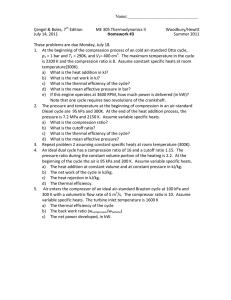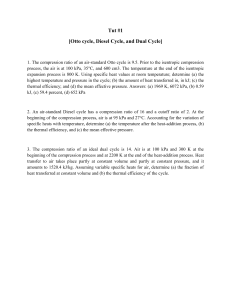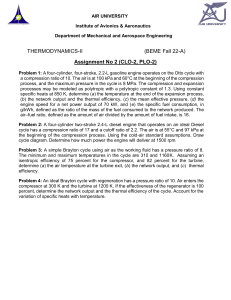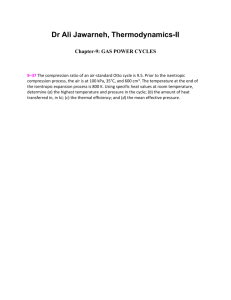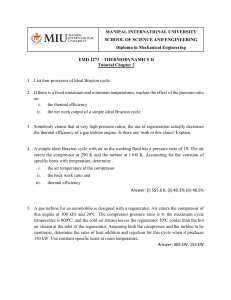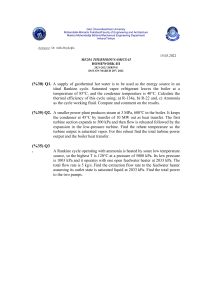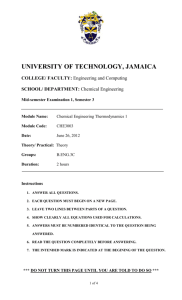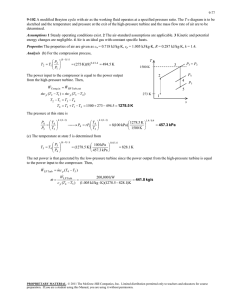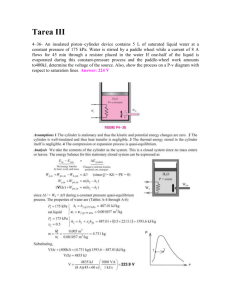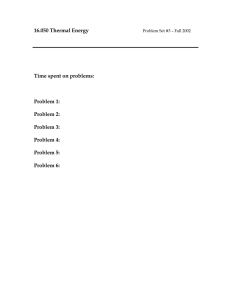Thermodynamics Cycles Assignment: Otto, Diesel, Brayton, Rankine
advertisement
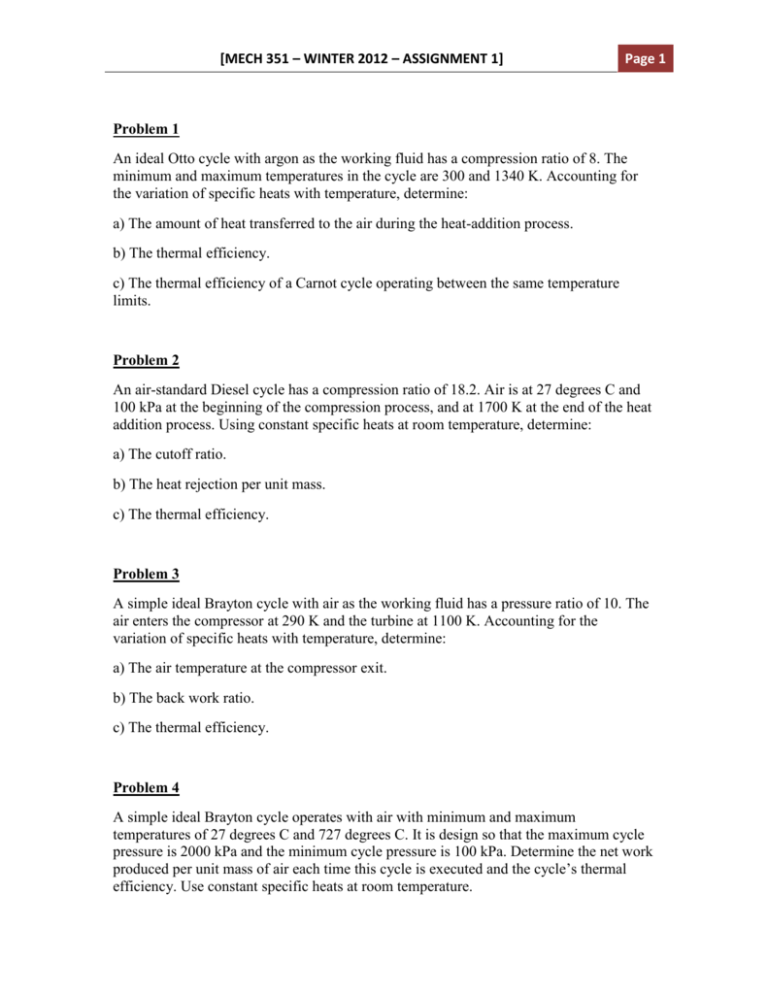
[MECH 351 – WINTER 2012 – ASSIGNMENT 1] Page 1 Problem 1 An ideal Otto cycle with argon as the working fluid has a compression ratio of 8. The minimum and maximum temperatures in the cycle are 300 and 1340 K. Accounting for the variation of specific heats with temperature, determine: a) The amount of heat transferred to the air during the heat-addition process. b) The thermal efficiency. c) The thermal efficiency of a Carnot cycle operating between the same temperature limits. Problem 2 An air-standard Diesel cycle has a compression ratio of 18.2. Air is at 27 degrees C and 100 kPa at the beginning of the compression process, and at 1700 K at the end of the heat addition process. Using constant specific heats at room temperature, determine: a) The cutoff ratio. b) The heat rejection per unit mass. c) The thermal efficiency. Problem 3 A simple ideal Brayton cycle with air as the working fluid has a pressure ratio of 10. The air enters the compressor at 290 K and the turbine at 1100 K. Accounting for the variation of specific heats with temperature, determine: a) The air temperature at the compressor exit. b) The back work ratio. c) The thermal efficiency. Problem 4 A simple ideal Brayton cycle operates with air with minimum and maximum temperatures of 27 degrees C and 727 degrees C. It is design so that the maximum cycle pressure is 2000 kPa and the minimum cycle pressure is 100 kPa. Determine the net work produced per unit mass of air each time this cycle is executed and the cycle’s thermal efficiency. Use constant specific heats at room temperature. [MECH 351 – WINTER 2012 – ASSIGNMENT 1] Problem 5 A simple ideal Rankine Cycle with water as the working fluid operates between the pressure limits of 3 MPa in the boiler and 30 kPa in the condenser and a turbine inlet temperature of 700 degrees C. The boiler is sized to provide a steam flow of 50 kg/s. Determine the power produced by the turbine and consumed by the pump. Page 2
